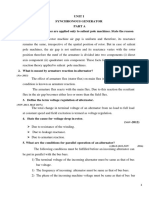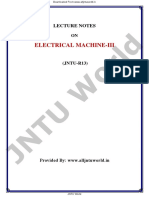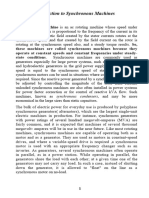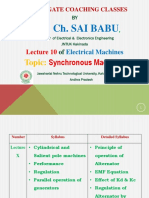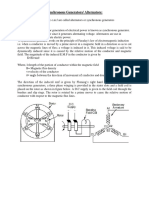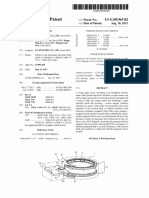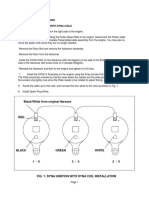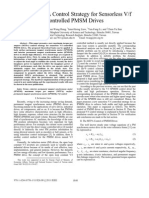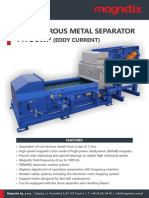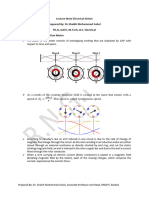0% found this document useful (0 votes)
22 views7 pagesSynchronous Generator
Synchronous generators are crucial for generating constant voltage output in power plants, utilizing either salient pole or cylindrical rotor types for different speed applications. The construction involves a rotating field and stationary armature, allowing for high power generation while minimizing mechanical stresses. The working principle is based on electromagnetic induction, where induced emf varies with the relative motion between conductors and magnetic flux.
Uploaded by
smulagapatyCopyright
© © All Rights Reserved
We take content rights seriously. If you suspect this is your content, claim it here.
Available Formats
Download as PDF, TXT or read online on Scribd
0% found this document useful (0 votes)
22 views7 pagesSynchronous Generator
Synchronous generators are crucial for generating constant voltage output in power plants, utilizing either salient pole or cylindrical rotor types for different speed applications. The construction involves a rotating field and stationary armature, allowing for high power generation while minimizing mechanical stresses. The working principle is based on electromagnetic induction, where induced emf varies with the relative motion between conductors and magnetic flux.
Uploaded by
smulagapatyCopyright
© © All Rights Reserved
We take content rights seriously. If you suspect this is your content, claim it here.
Available Formats
Download as PDF, TXT or read online on Scribd
/ 7



